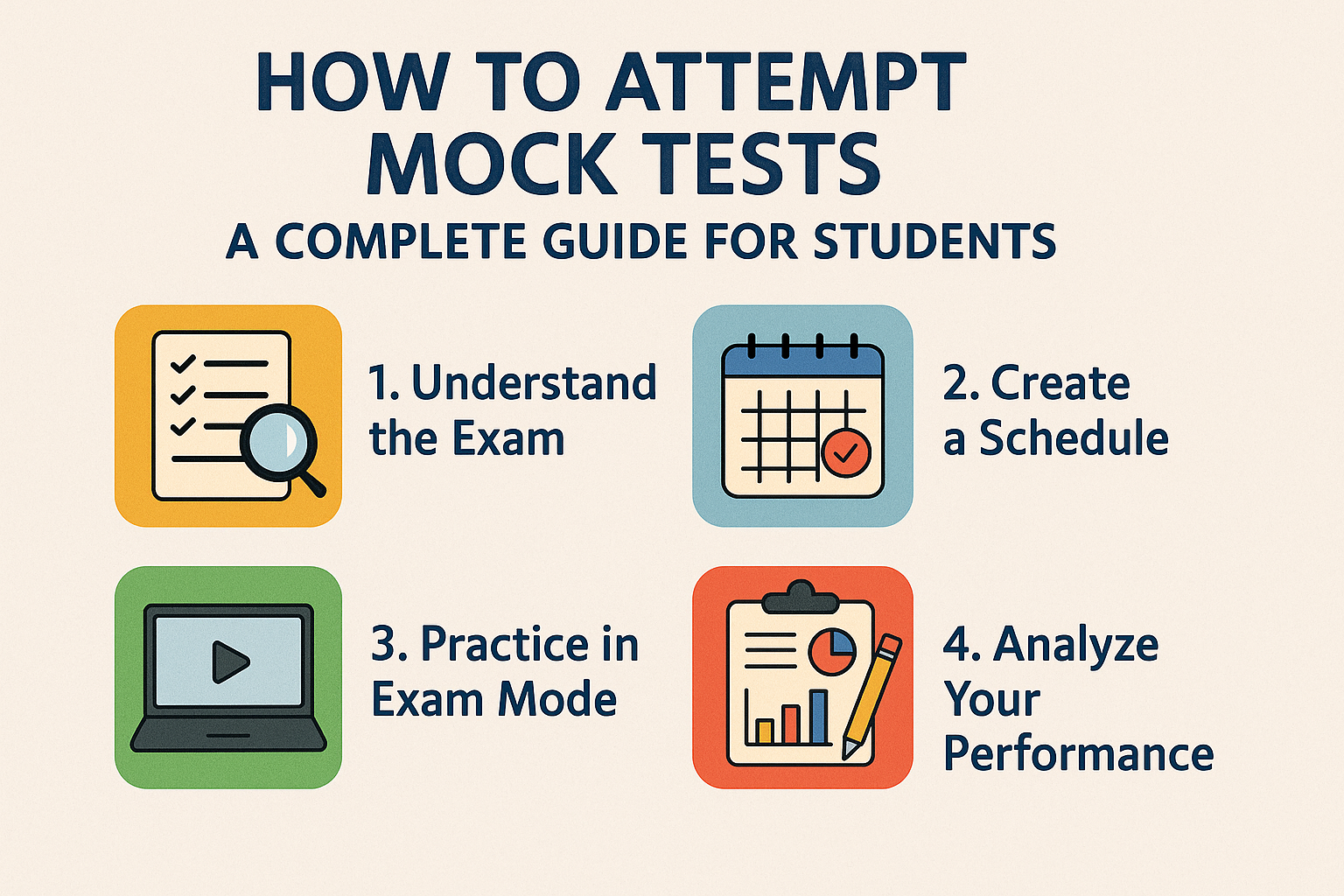
Mock tests are one of the most powerful tools for exam preparation, whether you’re aiming for JEE, NEET, UPSC, JAM, GATE, or board exams. They simulate the real exam environment, improve time management, and highlight weak areas. But simply taking mock tests is not enough — you must know how to attempt mock tests smartly.
Why Attempting Mock Tests the Right Way Matters
- Boosts Confidence: Familiarizes you with exam pressure and reduces fear.
- Improves Speed & Accuracy: Practice under timed conditions helps you solve faster.
- Reveals Weak Areas: Identifies topics where you lose marks.
- Builds Exam Strategy: Teaches you when to skip, attempt, or guess.
Step-by-Step Strategy: How to Attempt Mock Tests
1. Simulate Real Exam Conditions
- Sit in a quiet place with no distractions.
- Stick to the official exam time limit (e.g., 3 hours for JEE/NEET).
- Use only allowed materials (no notes, no internet search).
Why? This trains your brain to perform under pressure just like the actual exam.
2. Time Allocation per Section
- Divide your exam duration across sections.
- Example (JEE Main, 3 hours): 1 hour for Physics, 1 hour for Chemistry, 1 hour for Maths.
- Stick to your allocation strictly.
Practicing time discipline ensures you don’t leave sections incomplete.
3. Start with Strengths, Then Weaknesses
- Attempt questions from your strongest subject/topic first.
- This boosts confidence and ensures you secure easy marks early.
- Later, move to tougher areas.
4. Follow the 3-Pass Rule
- Pass 1: Solve easy questions quickly.
- Pass 2: Attempt medium-level questions you skipped.
- Pass 3: Tackle difficult/time-consuming problems if time remains.
This maximizes marks while reducing wasted time.
5. Be Careful with Negative Marking
- Don’t guess blindly if there’s negative marking.
- Use elimination strategy: strike out wrong options before choosing.
6. Track Time per Question
- If you’re stuck on a problem for more than 90 seconds, skip it and return later.
- Always prioritize completing the paper over solving every tough question.
7. After the Mock Test: The Real Learning Begins
- Review all incorrect and unattempted questions.
- Identify error type:
- Conceptual mistake (need theory revision)
- Calculation mistake (need accuracy training)
- Time mismanagement (need speed practice)
- Maintain a “Mistake Notebook” where you note recurring errors and their solutions.
Platforms like NTA official mock test site, PW.live, Testbook, or Embibe provide detailed performance analysis:
- Accuracy rate
- Section-wise performance
- Time spent per question
Reviewing analytics helps you refine strategy.
How Often Should You Take Mock Tests?
- Early Preparation (6–8 months before exam): 1 mock test per month.
- Mid Preparation (3–5 months left): 1 mock test every 2 weeks.
- Final 2 Months: 2–3 mock tests per week.
- Last 2 Weeks: Daily full-length mocks + revision.
Useful Direct Links for Free Mock Tests
- NTA Official Mock Test (for JEE/NEET/UGC NET): https://nta.ac.in/Quiz
- IIT JAM 2025 Mock Tests & Papers (IIT Delhi): https://jam2025.iitd.ac.in/qp.php
- Testbook Free Mock Tests: https://testbook.com/mock-test
- Physics Wallah (PW) Mock Tests: https://www.pw.live/



